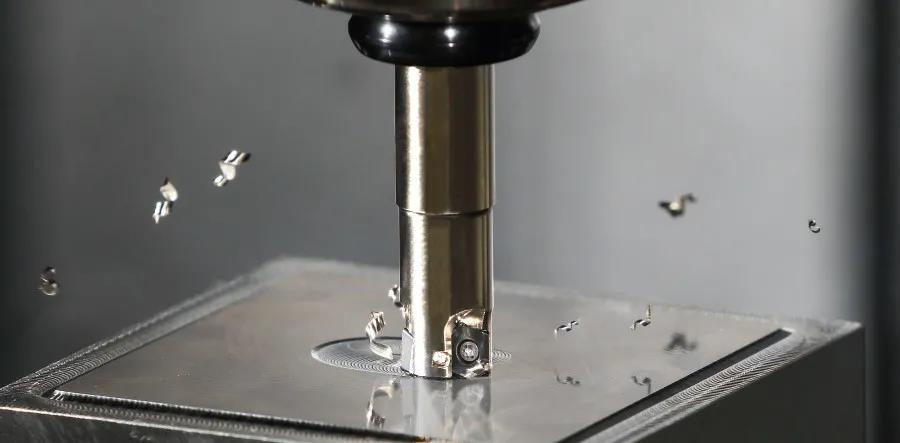Keyword: CNC machining parts Auto Spare Parts Milling machining Turning parts Grinding machining
Contact person: Nick Lee
Phone: (86) 15362887736
E-mail: sales03@dgmtwj.cn
Tel: (86) 769-88388276
Factory: No.2, Baidai Industrial Park, Daojiao Town, Dongguan, China ,
Turning
The workpiece rotates, and the turning tool performs cutting processing of linear or curved movement in the plane. Turning is generally carried out on a lathe to process the inner and outer cylindrical surfaces, end surfaces, conical surfaces, forming surfaces and threads of the workpiece.
The machining accuracy of turning is generally IT8-IT7, and the surface roughness is 1.6~0.8μm.
1) Rough turning strives to use large cutting depth and large feed to improve turning efficiency without reducing the cutting speed, but the machining accuracy can only reach IT11, and the surface roughness is Rα20~10μm.
2) For semi-finishing and finishing turning, try to use high-speed and small feed and cutting depth, the machining accuracy can reach IT10~IT7, and the surface roughness is Rα10~0.16μm.
3) High-speed precision turning of non-ferrous metal parts with a finely researched diamond turning tool on a high-precision lathe can make the machining accuracy reach IT7~IT5, and the surface roughness is Rα0.04~0.01μm. This kind of turning is called "mirror turning" ".
Milling
Milling refers to the use of rotating multi-edged tools to cut workpieces, which is a highly efficient machining method. It is suitable for processing planes, grooves, various forming surfaces (such as splines, gears and threads) and special shapes of molds. According to the same or opposite direction of main movement speed and workpiece feed direction during milling, it is divided into down milling and up milling.

The machining accuracy of milling is generally up to IT8~IT7, and the surface roughness is 6.3~1.6μm.
1) The machining accuracy during rough milling is IT11~IT13, and the surface roughness is 5~20μm.
2) The machining accuracy of semi-finish milling is IT8~IT11, and the surface roughness is 2.5~10μm.
3) The machining accuracy of finishing milling is IT16~IT8, and the surface roughness is 0.63~5μm.
Planing
Planing processing is a cutting processing method in which a planer is used to make a horizontal relative linear reciprocating motion on the workpiece, and is mainly used for the shape processing of parts.
The machining accuracy of planing can generally reach IT9~IT7, and the surface roughness is Ra6.3~1.6μm.
1) The rough planing accuracy can reach IT12~IT11, and the surface roughness is 25~12.5μm.
2) The precision of semi-finish planing can reach IT10~IT9, and the surface roughness is 6.2~3.2μm.
3) The precision of finishing planing can reach IT8~IT7, and the surface roughness is 3.2~1.6μm.
Grinding
Grinding refers to a processing method that uses abrasives and abrasive tools to remove excess material on a workpiece. It is a finishing process and is widely used in the machinery manufacturing industry.
Grinding is usually used for semi-finishing and finishing, and the accuracy can reach IT8~IT5 or even higher. The surface roughness is generally 1.25~0.16μm.
1) The surface roughness of precision grinding is 0.16~0.04μm.
2) The surface roughness of ultra-precision grinding is 0.04~0.01μm.
3) The surface roughness of mirror grinding can reach below 0.01μm.
Drilling
Drilling is a basic method of hole processing. Drilling is often carried out on drilling machines and lathes, but can also be carried out on boring machines or milling machines.
The machining accuracy of drilling is relatively low, generally only reaching IT10, and the surface roughness is generally 12.5~6.3μm. After drilling, reaming and reaming are often used for semi-finishing and finishing.
Boring
Boring is an inner diameter cutting process that uses tools to expand holes or other circular contours. Its application range generally ranges from semi-rough machining to finishing. The tools used are usually single-edged boring tools (called boring bars).
1) The boring accuracy of steel materials can generally reach IT9~IT7, and the surface roughness is 2.5~0.16μm.
2) The machining accuracy of precision boring can reach IT7~IT6, and the surface roughness is 0.63~0.08μm.
Note: Machining accuracy is mainly used to characterize the fineness of the produced product, and is a term used to evaluate the geometric parameters of the processed surface. The standard to measure the machining accuracy is the tolerance level, from IT01, IT0, IT1, IT2, IT3 to IT18, there are a total of 20, of which IT01 indicates that the part has the highest machining accuracy, and IT18 indicates that the part has the lowest machining accuracy. Normal factories and mines Machinery belongs to IT7 level, and general agricultural machinery belongs to IT8 level. According to the different functions of the product parts, the machining accuracy that needs to be achieved is different, and the selected processing form and processing technology are also different.
Welcome to visit our store in Alibaba to get the hote sales
https://dgmtwj.en.alibaba.com/?spm=a2700.7756200.0.0.4e3271d2zTFnQa
And welcome to send the drawing for quotation and production: